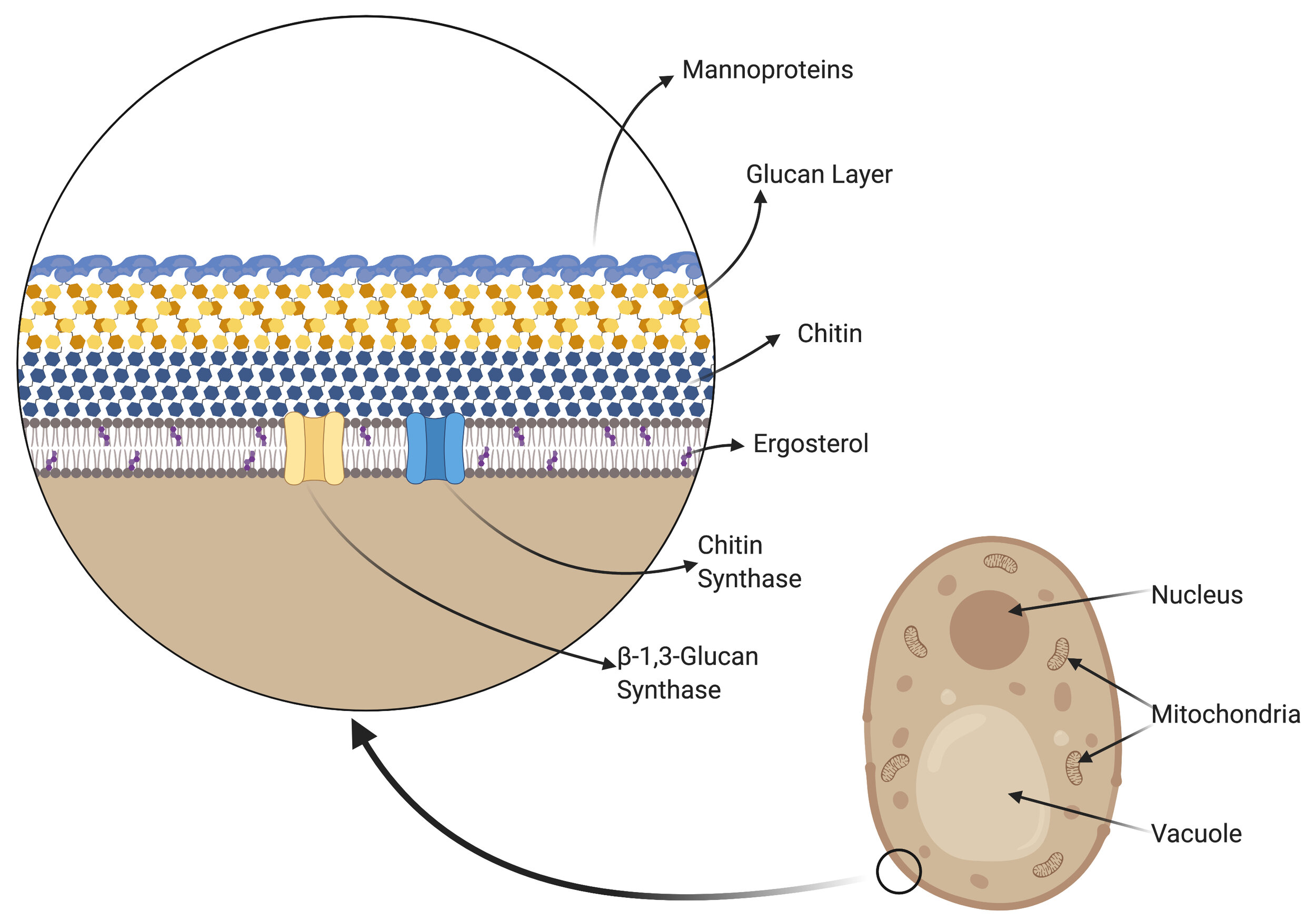The Fungal Cell Wall
Understanding the fungal cell wall is crucial to the development of antifungal agents. In this infographic, we see a simplified fungal cell with the characteristic features of a Eukaryotic cell except for the presence of a vacuole--that is a feature not shared by every Euakaryote but is often seen in fungi. Zooming in on the cell wall, we see a variety of components that give fungi some unique properties. Firstly, there is a cell membrane with ergosterol embedded in it (ergosterol and its synthesis is a key target for many antifungal agents). In that membrane, there are a few key transporters used to aid in the construction of the outer aspects of the cell wall. The chitin synthase makes the inner layer of the cell wall which is composed of chitin, and the beta-1,3-glucan synthase is responsible for synthesizing the next layer out--the glucan layer. Finally, there are mannoproteins on the outer portion of the cell wall to provide further rigidity and protection.
An overview of the fungal cell wall & targets of common 💊#antifungals, after today’s great lecture by awesome ID pharmacist .@CeciliaLauTN
— Natalie Marshall, PhD🔬👩🔬🤯 (@MicrobeNat) July 22, 2020
🙏Thanks.@Linder_surprise.@Rybak_JM for ‼️corrections & 📚resources!#IDtwitter #meded
📚https://t.co/ScuPpP9AHy
📚https://t.co/bBiESlEp2B pic.twitter.com/JKhB49D2cP

